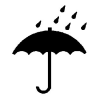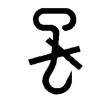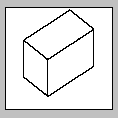| Carpets | [German version] |
Table of contents |
|
| General: | ||
| Product information | ||
| Packaging | ||
| Transport | ||
| Container transport | ||
| Cargo securing | ||
Product information
Product name
| German | Carpets |
| English | Carpets |
| French | Tapis |
| Spanish | Alfombras, alfombrado |
| CN/HS number * | 57 ff. |
(* EU Combined Nomenclature/Harmonized System)
Product description
Carpets and runners are textile floor coverings which are mainly transported in rolls or bales. Carpets may be produced by knotting, weaving, knitting, stitching/stitch-bonding, electrostatic flocking and adhesive bonding. Wool and synthetic fibers (polyamide, polyacrylonitrile, polyester) are used for soft hair carpets, with goat hair, mohair and cotton also being used.
The carpet backing may consist of woven cotton or jute or be made from polyamide. In tufted carpets, the foundation of the carpets consists of jute or polypropylene and the actual backing consists of foam rubber or PVC, or alternatively a second type of foundation is used which may consist of jute or other fibers.
A distinction is also drawn between:
| hand-knotted, machine-knotted | |
| hand-woven and | |
| machine-woven carpets |
Knotted carpets are hand- or machine-knotted carpets. Hand-knotted carpets from the Orient are known as oriental carpets or rugs. The pile is knotted in rows in the vertically tensioned warp. The best known types of hand-knots are the carpets Turkish and Persian knots. Oriental carpets are named after their place of origin, for example Afghan (Afghanistan), Bokhara, Baluchistan, Haris, Kirman, Shirvan, Tabriz and Smyrna. In addition to these knotted-pile carpets, there are also „kilims“, or knitted, two-sided carpets, which are thinner and generally used as door curtains and bedspreads.
Carpets are a valuable cargo.
Quality / Duration of storage
Carpets, especially oriental carpets, are generally a very valuable cargo.
Intended use
Carpets are primarily used as floor coverings, but in many countries are also used as decorative wall hangings.
Figures
(Click on the individual Figures to enlarge them.)
 Figure 1 |
 Figure 2 |
 Figure 3 |
Countries of origin
This Table shows only a selection of the most important countries of origin and should not be thought of as exhaustive.
| Europe | Germany, Czech Republic, Spain |
| Africa | Egypt, Morocco, Algeria, Tunisia |
| Asia | India, Iran, Central Asia (Turkistan), Afghanistan, Asia Minor, Caucasus, Armenia, China, Pakistan, Japan |
| America | |
| Australia |
Back to beginning
Packaging
Carpets are transported both as bales and rolls, in each case wrapped in plastic film or jute/hessian sacking. They are rolled up with the backing inside and often packaged in transparent plastic film bags. Runners are often protected at the ends with hardboard disks to stop them from slipping and thus telescoping.
 Figure 4 |
 Figure 5 |
| Marking of packages | ||
 Keep dry |
 Use no hooks |
|
Back to beginning
Transport
Symbols
 General cargo |
Means of transport
Ship, truck, railroad, aircraft
Container transport
Transport in standard containers , subject to compliance with lower limits for water content of goods, packaging and flooring.
Cargo handling
Carpets must not be handled with bag or plate hooks as the film packaging can easily be torn. A carpet carrying mandrel should be used for handling rolled carpets.
Stowage factor
| 2.77 – 3.34 m³/t (bales) [1] | |
| 2.79 – 3.34 m³/t (bales) [11] | |
| 3.02 – 5.00 m³/t (250 kg rolls, sewn in jute fabric) [1] |
The stowage factor may vary as a function of the tightness of the rolls.
Stowage space requirements
The holds/containers must be dry and clean. The stowage space must be away from heat sources (deep tanks, heated double bottom tanks). If distortion is to be avoided, the floor should be as smooth as possible. Carpets should not be overstowed with other cargo, especially not with boxes and packages with metal strapping or wires, as carpets are sensitive to rust.
Segregation
Fiber rope/thin fiber nets, slip or label bearing product data and/or bar code.
Cargo securing
Some runners should be transported vertically because, as a result of the weaving method used, they have tendency to shift and, in the event of horizontal stowage, telescoping could occur, causing the runners to become irreversibly wavy.
Back to beginning
Risk factors and loss prevention
RF Temperature
Carpets require particular temperature, humidity/moisture and possibly ventilation conditions (SC VI) (storage climate conditions) .
Favorable travel temperature range: 10 – 35°C [1]
Optimum travel temperature: 20°C [1]
Optimum storage temperature is 20°C ± 5°C. Transient temperature variations within the range 10 – 35°C do not impair quality.
At higher temperatures, the risk of attack by pests and microorganisms increases. Failure to comply with the specified limits results in a considerable impact upon the physical properties of the fibers in terms of strength, electrical conductivity and brittleness of the carpet backing.
Elevated external temperatures during loading followed by severe cooling may be enough to cause sweating in container transport.
Back to beginning
RF Humidity/Moisture
Carpets require particular temperature, humidity/moisture and possibly ventilation conditions (SC VI) (storage climate conditions) .
| Designation | Humidity/water content | Source |
| Relative humidity | 65 – 75% | [1] |
| Water content | 17 – 18.25% (wool) 8.5% (cotton) |
[1] |
| Maximum equilibrium moisture content | 70% | [1] |
Carpets are hygroscopic (hygroscopicity). It is thus essential to protect the cargo from moisture. Sweat damage may result in dye migration between the various constituent components.
The product should be stored at a relative humidity of 65 – 75%. Excessively high moisture levels (seawater, rain and condensation water) may cause mustiness, mildew stains and mold growth and encourage insect infestation.
Cotton and wool fibers converted into woven carpets have a high swelling index, caused by their histological microstructure. Cotton may absorb 25 – 27% and wool up to 40% of its own weight of water vapor without feeling damp. This has a significant effect on the physical characteristics of the fibers, such as strength, electrical conductivity, etc..
If carpets are sodden or exposed to moisture for extended periods, rotting processes take place, possibly resulting in lasting damage, which cannot be identified from the outside of the package. Especially in the case of single color carpets, moisture and stack pressure on the soft yarns result in conspicuous shadows.
The flooring of the containers must be absolutely clean and, most particularly, dry. The water content of the flooring must not exceed 12%. Hand-dry flooring may still contain 14% moisture and thus be a source of mold, rot-causing bacteria and other pests. Mildew stains and discoloration may occur on the carpet (14% moisture content of the lumber corresponds to an equilibrium moisture content of 80%, so exceeding the mold growth threshold of 75%).
If contact with chloride solutions, e.g. seawater, is suspected, a seawater test using the silver nitrate method must be performed.
Back to beginning
RF Ventilation
Carpets require particular temperature, humidity/moisture and possibly ventilation conditions (SC VI) (storage climate conditions) .
Recommended ventilation conditions: air exchange rate: 6 changes/hour (airing), if the dew point of the external air is lower than the dew point of the hold air.
Back to beginning
RF Biotic activity
This risk factor has no significant influence on the transport of this product.
Back to beginning
RF Gases
This risk factor has no significant influence on the transport of this product.
Back to beginning
RF Self-heating / Spontaneous combustion
Due to the structure of the processed natural and manmade fiber materials, the dense fiber pile, the packaging materials and the carpet backing material, carpets are readily combustible. Smoking must therefore be strictly prohibited. Preferably, CO2 is to be used to extinguish fires.
Back to beginning
RF Odor
| Active behavior | Carpets are usually treated with chemical mothproofing agents and packaged in tar paper, so they may release a slightly unpleasant odor. |
| Passive behavior | The dense pile surface of carpets means that unpleasant foreign odors may readily be absorbed, possibly resulting in depreciation. |
Back to beginning
RF Contamination
| Active behavior | Carpets are a very clean cargo. |
| Passive behavior | The holds/containers must be kept absolutely clean. Most particularly, protection must be provided from rust and wetting (drinking water, urine) and from foreign matter (dust, dirt, wood splinters, metal chips, chemicals etc.). Salts may cause dye migration and color changes; therefore, if contact with chloride solutions, e.g. seawater, is suspected, a seawater test using the silver nitrate method must be performed |
Back to beginning
RF Mechanical influences
Carpets must be checked for intactness. The use of hooks or plate hooks must be absolutely prohibited. A carpet carrying mandrel should be used for handling rolled carpets.
Excessive stack pressure causes in irreversible shadows (especially on single color carpets), resulting in severe depreciation.
Long rolls must be laid flat on a smooth surface in order to avoid any distortion.
Back to beginning
RF Toxicity / Hazards to health
This risk factor has no significant influence on the transport of this product.
Back to beginning
RF Shrinkage / Shortage / Theft
The product is highly valuable and is thus particularly at risk from theft. Containers must stowed with the doors of adjacent containers facing towards each other.
Back to beginning
RF Insect infestation / Diseases
Carpets may be infested by the larvae of the carpet beetle (Anthrenus scrophulariae) during storage and transport.
If excessively damp, carpets very rapidly fall victim to molds and rot-causing bacteria, for example if container flooring is excessively moist (elevated equilibrium moisture content in the container).
Back to beginning
